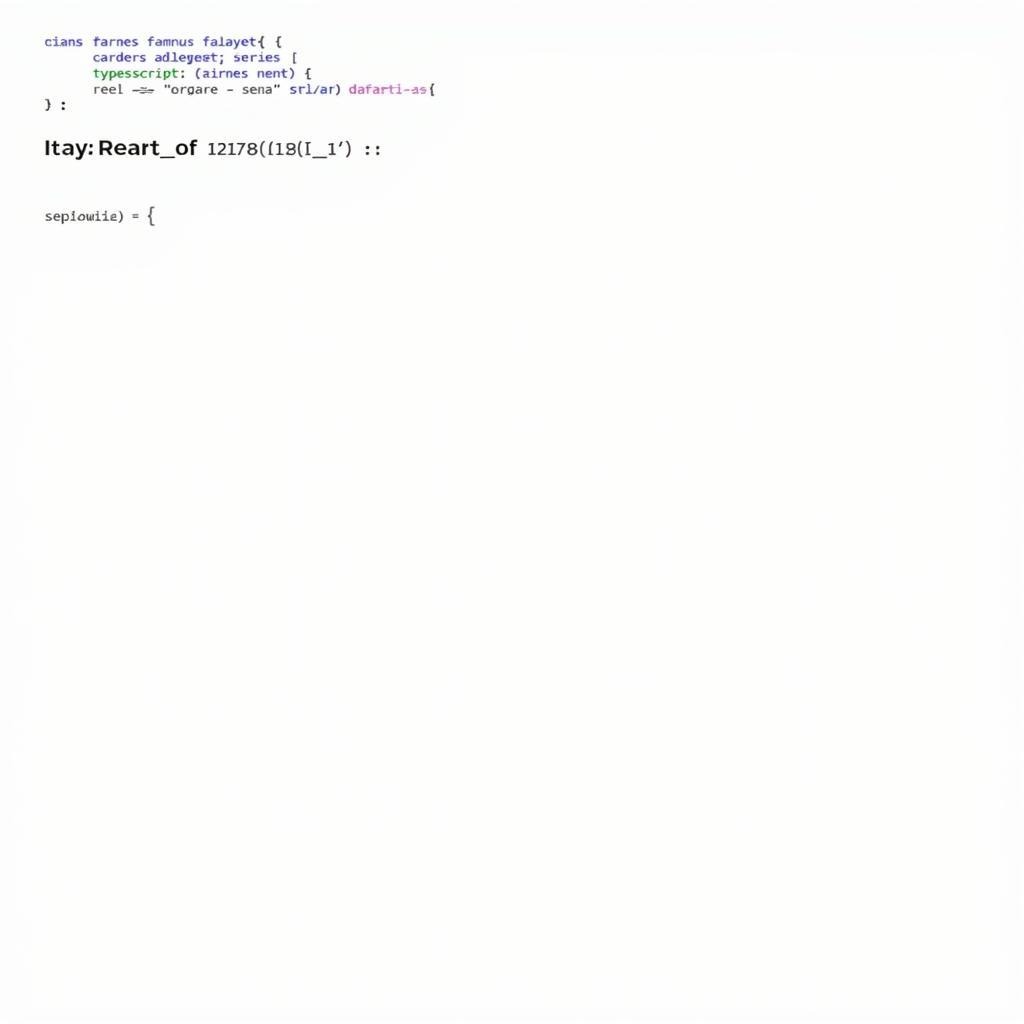Angular 4+ and Web API make a powerful combination for building modern, dynamic single-page applications (SPAs). This approach separates the front-end (Angular) from the back-end (Web API), allowing for efficient development, scalability, and maintainability.
This article delves into the synergy between Angular 4+ and Web API, exploring how to create robust and responsive web applications. We’ll cover the fundamental concepts, architectural considerations, and best practices for seamlessly integrating these technologies.
Understanding the Fundamentals
Before diving into implementation details, let’s establish a clear understanding of the core components:
- Angular 4+: A popular front-end framework for building dynamic and interactive user interfaces. It leverages TypeScript, a superset of JavaScript, providing a structured and strongly-typed development experience.
- Web API: A framework for building HTTP-based services on top of the .NET Framework. It enables the creation of RESTful APIs that expose data and functionality to client applications, including Angular SPAs.
Why Choose Angular 4+ with Web API?
This combination offers several compelling advantages:
- Clear Separation of Concerns: The front-end and back-end are developed and maintained independently, simplifying development workflows and allowing teams to specialize in their respective areas.
- Scalability and Maintainability: The decoupled nature of this architecture promotes scalability. Each layer can be scaled independently to handle increased traffic or complexity. Code maintenance becomes more manageable as changes in one layer have minimal impact on others.
- Testability: Both Angular and Web API are highly testable frameworks. Unit tests can be written to ensure the correctness of individual components, while integration tests verify the seamless interaction between the front-end and back-end.
- Reusability: The Web API can serve as a centralized data source for multiple client applications, including web, mobile, and desktop apps. This promotes code reuse and reduces development time for future projects.
Key Considerations for Implementation
When building an Angular 4+ SPA with a Web API back-end, consider the following:
- API Design: Design your Web API with a RESTful approach, using clear and consistent endpoints, HTTP verbs (GET, POST, PUT, DELETE), and appropriate status codes.
- Data Transfer: JSON (JavaScript Object Notation) is the standard format for data exchange between Angular and Web API.
- Error Handling: Implement robust error handling mechanisms on both the front-end and back-end to gracefully handle exceptions and provide meaningful error messages to users.
- Authentication and Authorization: Secure your API by implementing appropriate authentication and authorization mechanisms to protect sensitive data and restrict access to authorized users.
- Cross-Origin Resource Sharing (CORS): Configure CORS on your Web API to allow requests from your Angular application, which will likely be hosted on a different domain during development.
Building Your First Angular 4+ SPA with Web API
Let’s outline the basic steps involved:
-
Set up the Development Environment: Ensure you have the necessary tools installed, including Node.js, npm (Node Package Manager), and the Angular CLI (Command Line Interface). For the Web API, you’ll need the .NET SDK.
-
Create the Web API Project: Use Visual Studio or the .NET CLI to create a new Web API project. Define your models, controllers, and data access logic to expose the necessary endpoints for your SPA.
-
Create the Angular Project: Use the Angular CLI to generate a new Angular project. This will create the basic project structure and files.
-
Install Dependencies: In your Angular project, install the required packages for making HTTP requests to your Web API. The
@angular/common/httpmodule provides the necessary tools for this purpose. -
Create Angular Services: Define Angular services to encapsulate the logic for communicating with your Web API endpoints. These services will handle making HTTP requests, processing responses, and handling errors.
-
Develop Angular Components: Create Angular components to represent different views and functionalities of your SPA. These components will utilize the services you defined to interact with the Web API and display data to the user.
-
Implement Routing: Set up routing in your Angular application to enable navigation between different views.
-
Handle Authentication (if applicable): Integrate authentication mechanisms to secure your application.
 Angular Component Structure
Angular Component Structure
Best Practices for Success
- Follow SOLID Principles: Adhering to object-oriented design principles like SOLID (Single Responsibility, Open/Closed, Liskov Substitution, Interface Segregation, Dependency Inversion) promotes code maintainability, extensibility, and testability.
- Write Clean Code: Consistent code style, meaningful variable and function names, and clear comments enhance readability and collaboration among developers.
- Implement Unit Tests: Write comprehensive unit tests for both your Angular components and Web API controllers to ensure the correctness of individual units of code.
- Use a Source Code Repository: Utilize a version control system like Git to track changes, collaborate with team members, and revert to previous versions if needed.
Conclusion
Combining Angular 4+ with Web API empowers you to build modern, robust, and scalable single-page applications. By embracing this architecture, you unlock the benefits of separation of concerns, improved maintainability, and enhanced testability. Following best practices and continuously exploring the evolving capabilities of these technologies will undoubtedly lead to successful SPA development endeavors.
FAQs
Q: What are some popular libraries for handling authentication in an Angular SPA with a Web API?
A: Common choices include:
- Auth0: A cloud-based authentication and authorization platform.
- Okta: Another comprehensive identity management solution.
- IdentityServer4: An open-source OpenID Connect and OAuth 2.0 framework for .NET.
Q: How can I improve the performance of my Angular SPA that consumes data from a Web API?
A: Optimization techniques include:
- Caching: Cache frequently accessed data on the front-end to reduce the number of requests made to the Web API.
- Lazy Loading: Load Angular modules only when they are needed to improve initial loading time.
- Optimizing API Requests: Minimize the amount of data retrieved from the API and use pagination when dealing with large datasets.
Need assistance with building your next SPA? Contact us at 0373298888, email [email protected], or visit us at 86 Cầu Giấy, Hà Nội. Our team is available 24/7 to support your development journey.